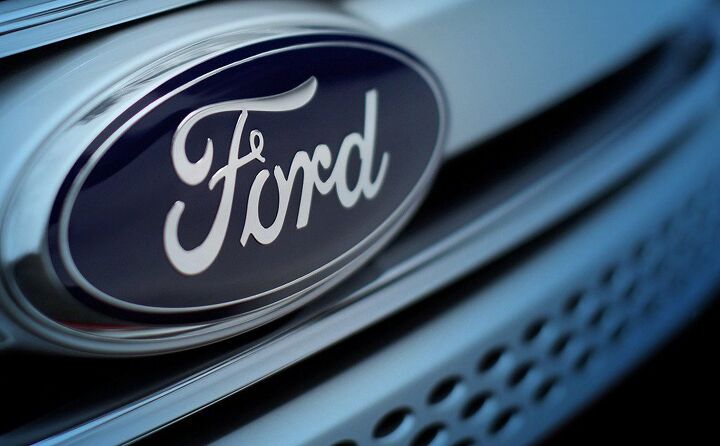Carbon Fiber Could Be Coming to a Ford Subframe Near You

If you’re worried that your corroded subframe will one day eject your car’s engine or suspension components like a spent hull from an Ithaca pump, the future holds promise. (Though you should still get that undercarriage checked out.)
Ford Motor Company, working with mega supplier Magna International, has developed a prototype vehicle subframe made of carbon fiber-reinforced composites. The goal is to one day offer a subframe that’s impervious to rust, while reducing weight and complexity.
Magna claims the new structure reduces mass by 34 percent and makes do with 87 percent fewer parts.
Instead of the 45 steel parts needed to build a current Ford subframe, the prototype uses just four steel parts, plus two molded composite parts. Adhesive bonding and structural rivets join those two molded components into holy matrimony.
Besides the aforementioned benefits, equipping a vehicle with a carbon-fiber subframe could improve the model’s stiffness and crash performance. Assuming the structure holds up well under durability testing, the only potential drawback would be component cost — though the higher cost of the two composite pieces could be offset by the vast reduction in overall parts.
According to the supplier, the new design aced its performance requirements based on computer-aided engineering analyses. The subframes are now in production, bound for component and vehicle-level testing at Ford.
“Collaboration is the key to success in designing lightweight components that can give our customers fuel economy improvements without compromising ride and handling, durability or safety,” said Mike Whitens, Director of Vehicle Enterprise Systems with Ford Research and Advanced Engineering, in a statement.
He added, “We must continue to work hard to achieve these lightweight solutions at the most affordable costs.”
Next up for the prototypes is a healthy regimen of corrosion, stone chipping and bolt load retention tests, which can’t be performed by computers. While testing is underway, Ford plans to develop a game plan for the component’s manufacturing and assembly process.
The automaker hasn’t said what products would use the new subframe, nor when to expect it on the market. However, it certainly appears that the near future should yield a production model with a carbon fiber truss.
[Image: Ford Motor Company]

More by Steph Willems
Latest Car Reviews
Read moreLatest Product Reviews
Read moreRecent Comments
- Probert They already have hybrids, but these won't ever be them as they are built on the modular E-GMP skateboard.
- Justin You guys still looking for that sportbak? I just saw one on the Facebook marketplace in Arizona
- 28-Cars-Later I cannot remember what happens now, but there are whiteblocks in this period which develop a "tick" like sound which indicates they are toast (maybe head gasket?). Ten or so years ago I looked at an '03 or '04 S60 (I forget why) and I brought my Volvo indy along to tell me if it was worth my time - it ticked and that's when I learned this. This XC90 is probably worth about $300 as it sits, not kidding, and it will cost you conservatively $2500 for an engine swap (all the ones I see on car-part.com have north of 130K miles starting at $1,100 and that's not including freight to a shop, shop labor, other internals to do such as timing belt while engine out etc).
- 28-Cars-Later Ford reported it lost $132,000 for each of its 10,000 electric vehicles sold in the first quarter of 2024, according to CNN. The sales were down 20 percent from the first quarter of 2023 and would “drag down earnings for the company overall.”The losses include “hundreds of millions being spent on research and development of the next generation of EVs for Ford. Those investments are years away from paying off.” [if they ever are recouped] Ford is the only major carmaker breaking out EV numbers by themselves. But other marques likely suffer similar losses. https://www.zerohedge.com/political/fords-120000-loss-vehicle-shows-california-ev-goals-are-impossible Given these facts, how did Tesla ever produce anything in volume let alone profit?
- AZFelix Let's forego all of this dilly-dallying with autonomous cars and cut right to the chase and the only real solution.


































Comments
Join the conversation
If rust is the problem, why not use stainless steel? Sure it may cost $10k more at purchase, but almost 100% of that cost can be paid back when it's being sold or scrapped, because stainless steel is highly sought after.
Ah, the Ithaca Model 37. That's a burly bear. I believe you can "slam-fire" these by depressing the trigger and cycling the action. In 2017, having a 12-gauge named after one of the more liberal regions in New York is fairly ironic. But those 37s are plenty tough.